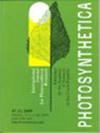强光胁迫下的光系统:机制和适应
IF 1.6
4区 生物学
Q2 PLANT SCIENCES
引用次数: 2
摘要
强光胁迫导致植物光合器官的光氧化损伤、PSII的光抑制和PSI的损伤,从而降低了植物的光合速率。通过非光化学猝灭和PSII D1蛋白的降解及其修复周期来耗散多余的能量,有助于抵抗光氧化损伤。光胁迫还通过磷酸核苷酸-3'-磷酸腺苷- 5'-磷酸、甲基赤四醇环二磷酸和活性氧的积累激活应激响应核基因,这些物质构成叶绿体逆行信号通路。此外,激素,如脱落酸、细胞分裂素、油菜素类固醇和赤霉素,在适应光波动中发挥作用。几种替代的电子流机制可以抵消多余的电子,包括质体或质体喹啉末端氧化酶的激活、细胞色素b6/f复合物、通过PSI的循环电子流、梅勒抗坏血酸过氧化物酶途径或水循环、线粒体替代氧化酶途径和光呼吸。在这篇综述中,我们提供了高光胁迫介导的光合器官损伤的见解,以及通过减少触角大小,通过引入突变体提高NPQ,表达藻类蛋白以提高光合速率和工程ATP合酶来减轻损伤的策略。本文章由计算机程序翻译,如有差异,请以英文原文为准。
Photosystems under high light stress: throwing light on mechanism and adaptation
High light stress decreases the photosynthetic rate in plants due to photooxidative damage to photosynthetic apparatus, photoinhibition of PSII, and/or damage to PSI. The dissipation of excess energy by nonphotochemical quenching and degradation of the D1 protein of PSII and its repair cycle help against photooxidative damage. Light stress also activates stress-responsive nuclear genes through the accumulation of phosphonucleotide-3'-phosphoadenosine- 5'-phosphate, methylerythritol cyclodiphosphate, and reactive oxygen species which comprise the chloroplast retrograde signaling pathway. Additionally, hormones, such as abscisic acid, cytokinin, brassinosteroids, and gibberellins, play a role in acclimation to light fluctuations. Several alternate electron flow mechanisms, which offset the excess of electrons, include activation of plastid or plastoquinol terminal oxidase, cytochrome b6/f complex, cyclic electron flow through PSI, Mehler ascorbate peroxidase pathway or water-water cycle, mitochondrial alternative oxidase pathway, and photorespiration. In this review, we provided insights into high light stress-mediated damage to photosynthetic apparatus and strategies to mitigate the damage by decreasing antennae size, enhancing NPQ through the introduction of mutants, expression of algal proteins to improve photosynthetic rates and engineering ATP synthase.
求助全文
通过发布文献求助,成功后即可免费获取论文全文。
去求助
来源期刊

Photosynthetica
生物-植物科学
CiteScore
5.60
自引率
7.40%
发文量
55
审稿时长
3.8 months
期刊介绍:
Photosynthetica publishes original scientific papers and brief communications, reviews on specialized topics, book reviews and announcements and reports covering wide range of photosynthesis research or research including photosynthetic parameters of both experimental and theoretical nature and dealing with physiology, biophysics, biochemistry, molecular biology on one side and leaf optics, stress physiology and ecology of photosynthesis on the other side.
The language of journal is English (British or American). Papers should not be published or under consideration for publication elsewhere.
 求助内容:
求助内容: 应助结果提醒方式:
应助结果提醒方式:


